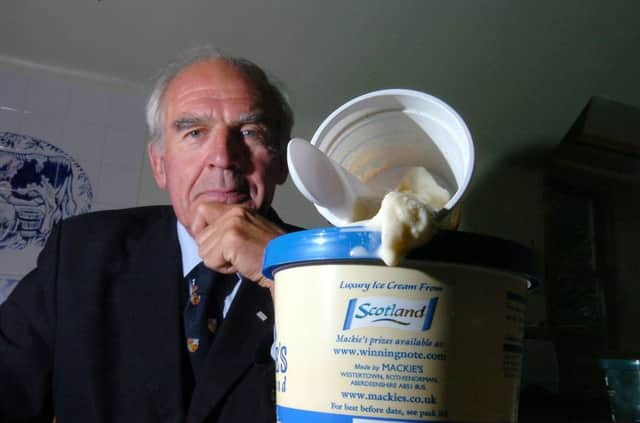Comment: Pondering Scottish agriculture’s influential figures


It was an evening spent with someone else with a keen interest in the farming industry. We had had supper round the kitchen table and had both agreed on the complexities of the next Common Agricultural Policy. We had competed informally on which particular policy was the most obtuse and complicated in this much promised “simplified” CAP.
The conversation had then drifted into that minefield covering landlord/tenant issues and we had agreed that the divide between the two parties would provide loads of articles in the weeks and months ahead.
Advertisement
Hide AdAdvertisement
Hide AdThen we observed the reduced opposition to genetic modification, with only a few people still continuing to believe they were “Frankenstein foods”. With a great deal of gene mapping now going on in our research centres there is a much wider, more rational and pragmatic approach to genetics.
And this was when my friend suggested we make a list of the ten most influential people in the Scottish agricultural scene. My immediate retort was the warning above about losing friends, but I was dragged into it and names started to emerge.
National Farmers Union presidents seemed an obvious place to start looking, but we soon recalled the truism that political lives are shaped by “events”. Some occupants of the top seat had not faced many “events”, while others – such as Jim Walker, who was NFUS president during the 2001 foot-and-mouth outbreak – very much had.
In a similar category were John Cameron, the president who led the fight against the French lamb imports, plus Scott Johnston, the chief executive who ensured the less favoured areas of Scotland were included under the CAP umbrella.
We then remembered one or two union hopefuls who never made it to the top but were still influential in Scottish agriculture. One went off to make high quality ice cream – Maitland Mackie, who then helped introduce the concept of farm assurance, which has made a major difference to the public perception of how food is produced.
My dining colleague then put forward two other business successes, John Campbell, Peebleshire egg producer, and Ian Galloway, Bridge of Allan-based red meat processor and exporter.
And while he was on the subject of food, my colleague suggested James Withers, who is now heading up Scotland Food & Drink, and every week issuing reports of record food and drink exports.
He then also suggested Brian Pack as someone who has influenced Scottish farming in the past. It was a good shout, even although currently he is tied up in red tape as he is working towards issuing a report on how to cut through it.
Advertisement
Hide AdAdvertisement
Hide AdWhat about livestock and plant breeding, he wondered, and at this point I made up and underlined the “no dead people” rule in the list otherwise it would have been swamped with the breed improvers of two centuries ago.
Sadly, livestock names did not come easily. There are many, many top stockspeople but none seemed to qualify under the “major influence” rule.
He did, however, mention Dr Jack Dunnet, the Caithness potato breeder who has achieved more than many of the big seed houses with multiples of his resources.
My friend admitted that we did not know the names of all those working in laboratories unravelling genetic codes and as such he was possibly missing someone who a generation down the line might be world famous. But we both simultaneously thought Professor Julie Fitzpatrick, who is running the Moredun animal disease research station, and said she would need to be included in any top ten list.
The clock struck 10pm just as the number ten name came in. It was late and we both went our separate ways. I had promised myself to think no more about such a list, but names kept buzzing about in my head.
Now having put this version into print, I await with trepidation the reaction from the many, many people who should have been mentioned or had hoped to be mentioned.
I hope my friend is ready for the consequences of a little supper discussion of the top men and women in Scottish agriculture – and hope there are not too many bruised egos out there.